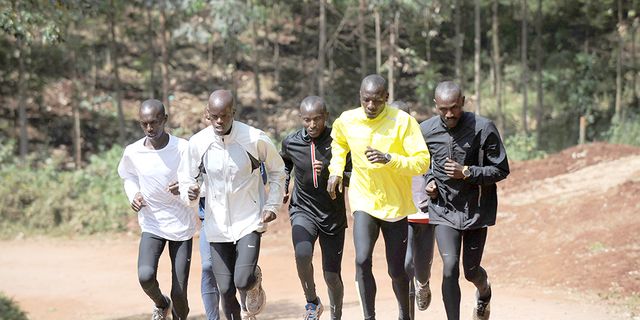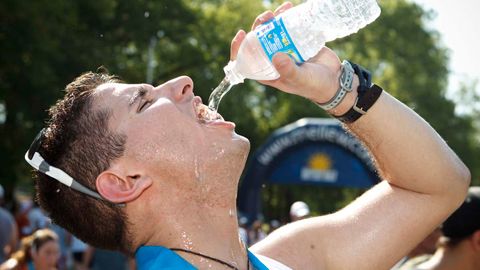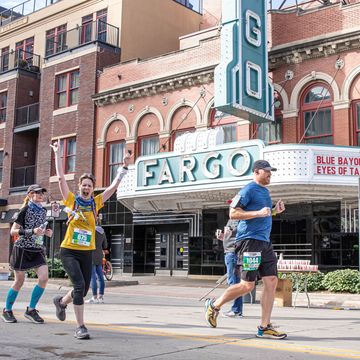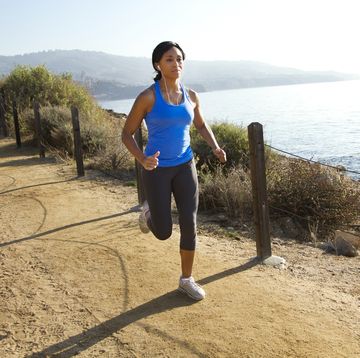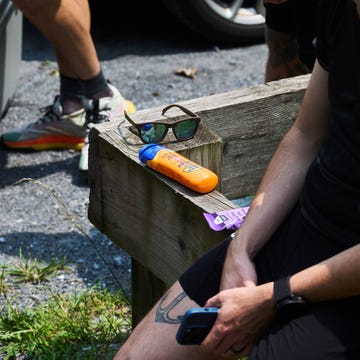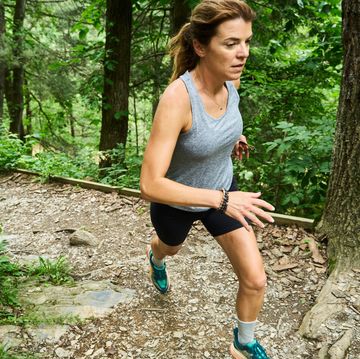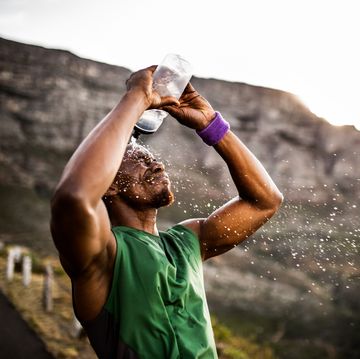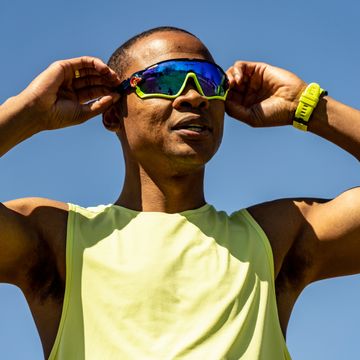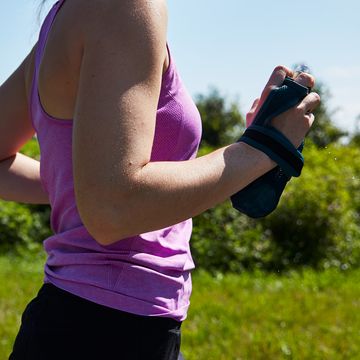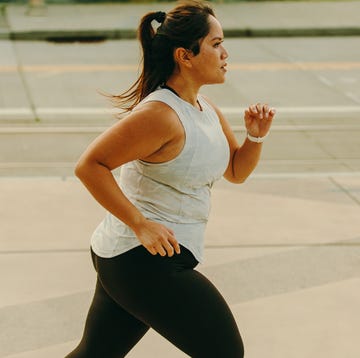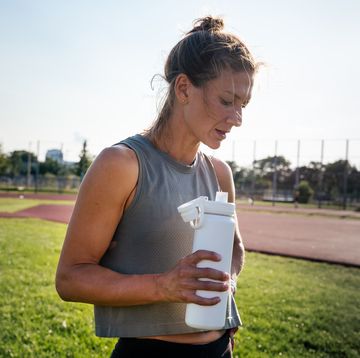You know what’s no fun? Training through the winter for a spring race, only for race day to be much warmer than anything you’ve run in for months. Suddenly, it doesn’t matter how often you persevered through dark and cold and ice and snow. You can’t run what you’re capable of because you’re not ready for the heat.
But you could be ready—with one simple tweak to your routine, new research from the University of Oregon suggests: Overdressing for training runs is a viable way to acclimate to hot-weather running, the researchers concluded. The study, published in Medicine & Science in Sports & Exercise, found that running in excess clothing in cool conditions approximated the stress of running in minimal clothing in extremely hot conditions. Unlike in other research that has reached similar conclusions, the subjects in the new study were well-trained distance runners, making this research more applicable to most runners.
RELATED: How Long Does it Take to Adjust to the Heat?
Thirteen runners ran on a treadmill for 40 to 60 minutes at an easy pace on two occasions: once in a chamber set at 104 degrees Fahrenheit and 30 percent relative humidity, and once when the chamber was 59 degrees Fahrenheit and 50 percent relative humidity. For the hot run, they wore a singlet and shorts. For the cooler run, just getting dressed was a workout—they put on three shirts and two jackets up top, half-tights, tights, loose track pants, and wind pants below, as well as a fleece hat and mittens.
The researchers measured heart rate, skin temperature, rectal temperature, sweat rate, and other physiological variables that are significantly affected by running in the heat. Although rectal temperature and sweat rate were higher at 104 degrees than when the runners wore five (!) layers, overall, the effects of overdressing were close enough to consider the technique a good way to get heat-acclimated, the researchers concluded.
The study’s findings confirm the wisdom of what some elites have been doing for a long time. In the 1970s and ’80s, sub-2:10 marathoner Benji Durden was known as much for training in a rain suit in the Atlanta summer as for his many racing accomplishments. Before they medaled in the 2004 Olympic Marathon, Deena Kastor and Meb Keflezighi did their easy mileage at midday in extra clothing to prepare for the heat of Athens, Greece. And when I spent a month in Iten, Kenya, the only time I saw Kenyans running in anything but full sweats was during hard workouts. This was true even of up-and-comers who owned just one or two running outfits for their two to three runs per day.
Kastor and Keflezighi overdressed leading up to what they knew would be a hot-weather marathon. Doing so in training can help even in races in more moderate temperatures, according to Christopher Minson, Ph.D., one of the University of Oregon researchers. “There is growing evidence that integrating heat acclimation into training can be beneficial in a range of different conditions, including cool weather,” he says. Running in the heat, or in simulated heat via a lot of clothing, leads to a higher heart rate for a given amount of work. Provide this stimulus often enough, and you’ll see changes such as increased plasma volume and a lower core temperature that make running easier at any temperature.
How to Overdress for Success
Brett Ely, the lead researcher, says to do like Kastor and Keflezighi and overdress on easy runs. Overdressing on important workouts like tempo runs and intervals will hurt the quality of those efforts too much to make the trade-off worthwhile. Ely says one exception could be if you know you’ll be racing in hot conditions at a time of year when you’re not used to running in the heat. She did some marathon-pace workouts in extra clothing before the 2016 Olympic Marathon Trials. The race was held in Los Angeles in February, and Ely knew that training in the Eugene, Oregon, winter wouldn’t prepare her for what she might encounter in L.A. Sure enough, on race day the temperature was in the 70s, and the sun beat down on the wide, exposed roads the runners raced on. Ely placed 51st out of 198 starters.
RW IN YOUR INBOX: Have the latest news, advice, and inspiration sent to you every day with our Runner’s World Newsletters.
If you want to try overdressing, Ely advises starting with an extra layer of clothing on an easy run, and gradually adding more clothing over the next few weeks. “Use internal cues about thermal comfort and effort so that you don’t put yourself at risk of heat injury,” she says. “You will likely feel very warm and sweaty, but you shouldn’t cross into ‘unbearably hot.’ The run will feel slightly harder, but shouldn’t feel like a workout effort.” Your heart rate will probably be 20 to 30 beats per minute higher than if you did the same run in a normal amount of clothing. You’ll obviously be sweating more, so be sure to replace the extra fluid loss. And, just as you ease back on hard training soon before a race, skip overdressing in the few days before a race.
“Ideally, athletes should always prepare for the environment they will compete in. However, this is not always predictable, so they should prepare for the worst condition they might compete in,” Minson says. (Boston Marathon, anyone?) “When done right, there is no down side to heat acclimation, and only benefits,” Minson says.

Scott is a veteran running, fitness, and health journalist who has held senior editorial positions at Runner’s World and Running Times. Much of his writing translates sport science research and elite best practices into practical guidance for everyday athletes. He is the author or coauthor of several running books, including Running Is My Therapy, Advanced Marathoning, and Meb for Mortals. Scott has also written about running for Slate, The Atlantic, the Washington Post, and other members of the sedentary media. His lifetime running odometer is past 110,000 miles, but he’s as much in love as ever.
